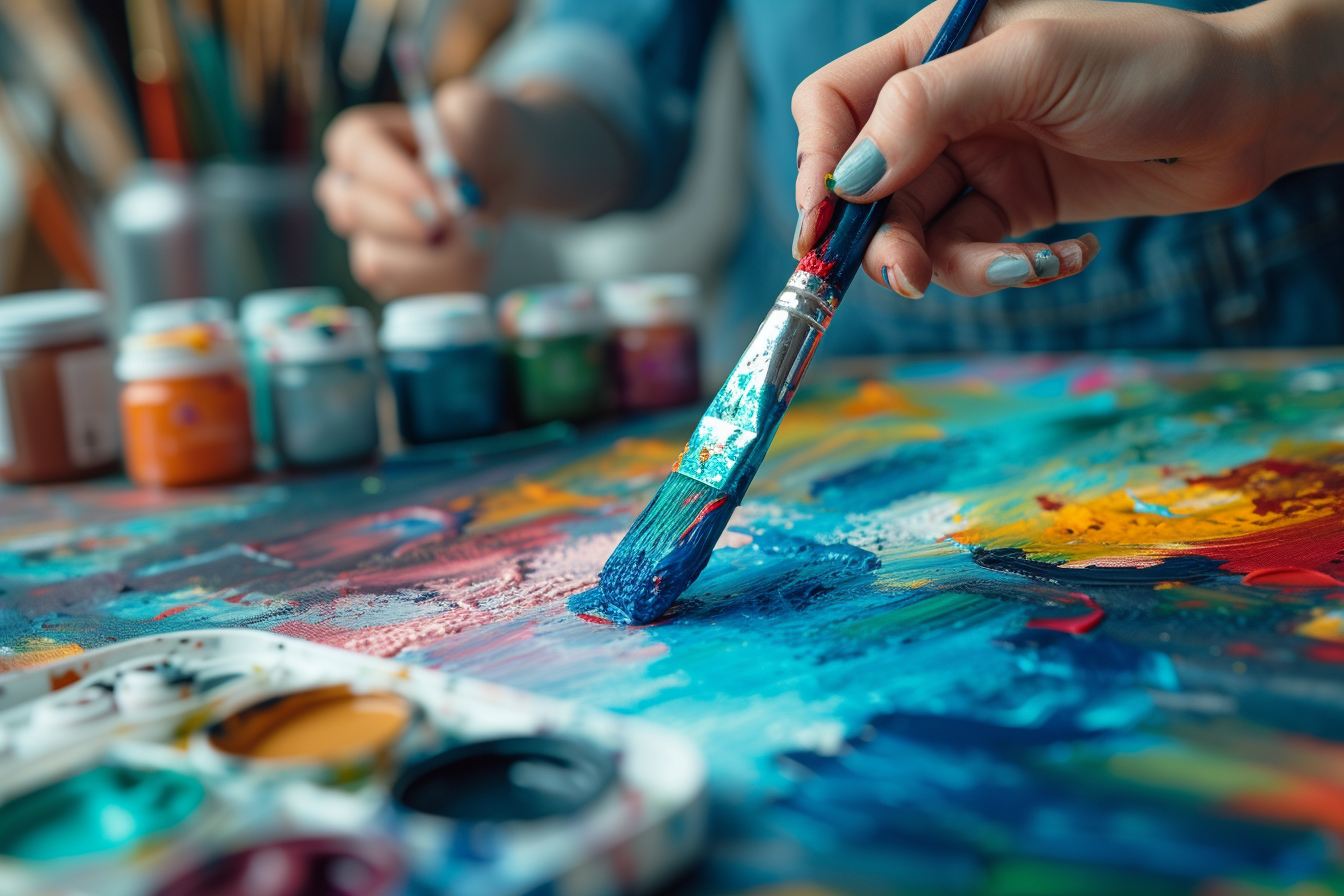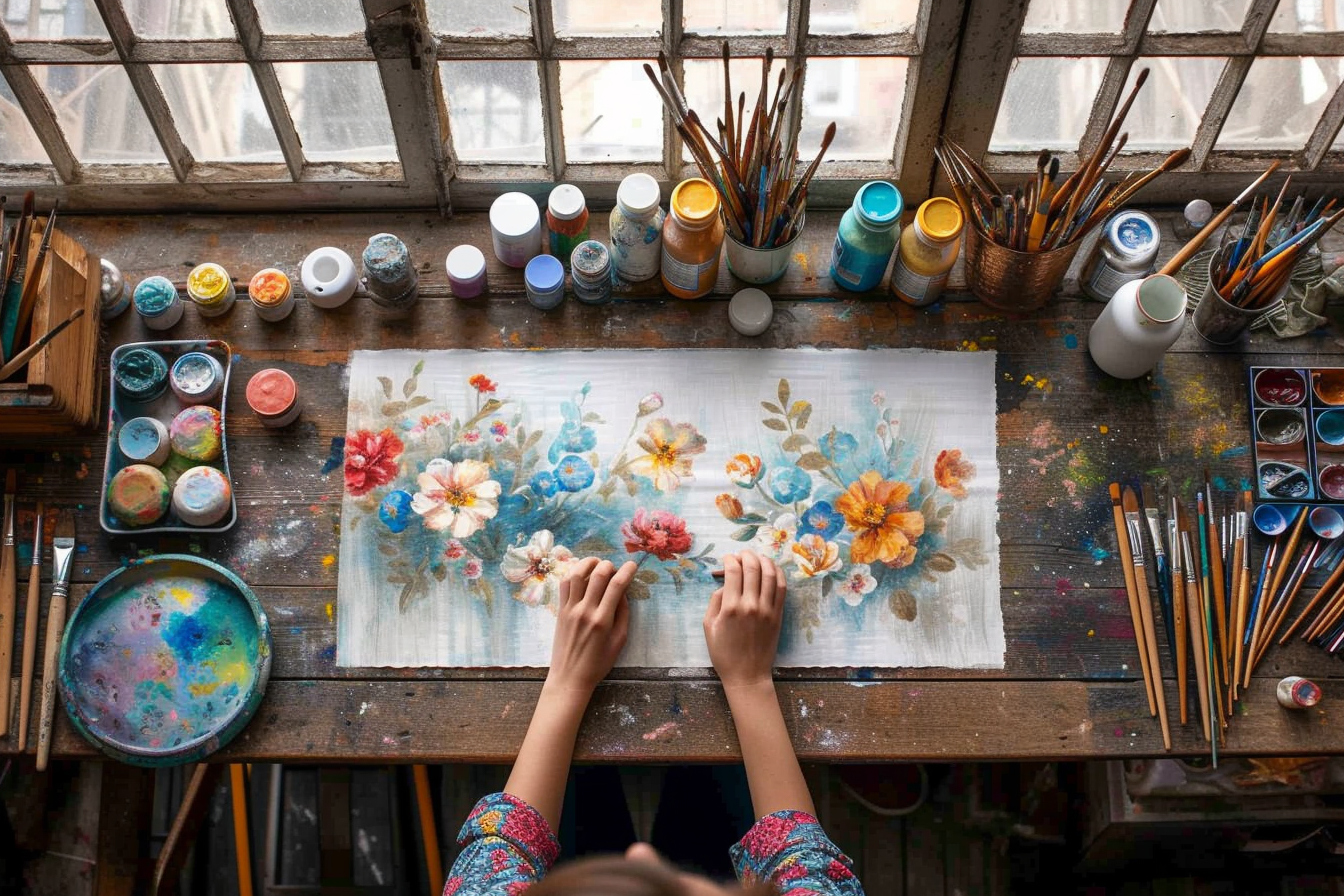Fabric painting is an engaging craft that transforms plain textiles into unique, customized works of art. This creative pursuit not only offers a platform for self-expression but also revitalizes clothing, home décor, and accessories with personal flair. The process is accessible for beginners yet rich with complexity for seasoned artists. This article walks you through a detailed roadmap to master fabric painting.
Understanding fabric and paints

Selecting the right fabric
Fabric choice is paramount in painting. Natural fibers like cotton, silk, and linen are generally preferred for their absorbency, making them ideal canvases for fabric paints. Synthetic fabrics can also be used, but they require specific paints and may not yield the same results. Opt for light-colored fabrics for painting, as they make colors appear more vibrant.
Choosing fabric paints
Fabric paints come in various types, including opaque, transparent, metallic, and pearlescent. For durability and flexibility, it’s essential to use paints designed specifically for fabric as they will resist cracking and fading. Always test the chosen paint on a scrap piece of fabric to ensure it meets your expectations for color and texture.
Preparing for painting
Before diving into the actual painting, adequate preparation ensures the best outcome. Pre-washing the fabric removes any sizing and impurities, providing a clean surface for the paint to bond. Iron your fabric to eliminate creases and lay it flat on the work surface. Using a garment stabilizer or a piece of cardboard inside a garment or underneath the fabric can prevent the paint from bleeding through to the other side.
Basic fabric painting techniques
Direct painting
Direct painting is as straightforward as it sounds. Armed with a paintbrush and fabric paint, you can freehand designs, fill in stencils, or create abstract patterns. Always start with lighter colors, gradually adding darker shades to maintain the integrity of the hues.
stamping
Fabric stamping involves pressing objects with intricate patterns or shapes — such as rubber stamps or found items — into the paint and then onto the fabric. It’s a quick method to produce repetitive motifs and is excellent for beginners.
stenciling
Stenciling utilizes cut-out designs to apply paint through the openings, leaving a crisp replica of the pattern on the fabric. Ensure that the stencil adheres flat to the fabric to prevent paint from seeping underneath the edges.
Silk screening
Silk screening, or screen printing, is a technique for producing multiples of the same design. This process requires a mesh screen, a squeegee, and fabric paint. While it has a steeper learning curve, silk screening allows for a clean, professional finish.
Advanced techniques for fabric painting
Watercolor effect
Achieve a watercolor effect on fabric using fabric paints thinned with water. Work quickly as the colors blend and spread easily on the wet fabric. This technique often produces soft, flowing patterns reminiscent of traditional watercolor paintings.
Salt technique
Applying salt to wet fabric paint can create unique textures. As the paint dries, the salt absorbs the moisture, resulting in crystalline patterns with an abstract, organic feel.
Resist painting
Resist painting includes a substance applied to the fabric that ‘resists’ the paint, such as wax or gutta. After the resist is set, you paint over and around it. Once the paint is dry, remove the resist material to reveal the untouched fabric beneath, creating a stunning contrast.
Fixing and caring for painted fabric
Heat setting
After the painting process, heat setting is vital for the durability of the piece. Every fabric paint brand has its own instructions for setting, which often involve using an iron or a tumble dryer. Always consult the instructions on the paint for the best results.
Maintenance tips
Caring for painted fabric appropriately extends its lifespan. Turn the fabric inside out before washing, opt for gentle cycles, and avoid harsh chemicals. Ideally, hand-washing in cold water is the safest method to maintain the vividness and integrity of your painted fabric.
Custom techniques and tips
To customize your fabric painting experience, explore mixing paint shades to create unique colors, or try various brush sizes and shapes for different effects. Experiment with layering colors to build depth or using sponges for a textured appearance.
Using mediums and additives
Fabric painting mediums can modify the paint’s consistency, sheen, and working time. Additives like textile medium transform acrylic paints into washable fabric paints, offering more flexibility in choosing colors and finishes.
Creating personal designs
Original artwork makes your fabric painting project genuinely one-of-a-kind. Sketch your designs on paper first or use computer software for complex creations. Transfer your design to the fabric using tracing paper, a lightbox, or freehand drawing skills.
Continuous learning
Engaging with the fabric painting community can enhance your skills and inspiration. Join workshops, follow tutorials, and connect with other artists. Always challenge yourself with new projects, and don’t be afraid to make mistakes—they’re often a valuable part of the learning process.
Fabric painting is an art form filled with endless possibilities, enticing for crafters and artists alike. Its versatility allows you to personalize virtually any textile item with your creative touch. By understanding the basics, meticulously preparing your materials, and developing your techniques, you embark on a journey of transforming mundane fabrics into remarkable expressions of your artistic vision. Keep exploring, experimenting, and pushing the boundaries of fabric painting to refine your craft and create custom textiles that resonate with your unique style and purpose.

Leave a Reply